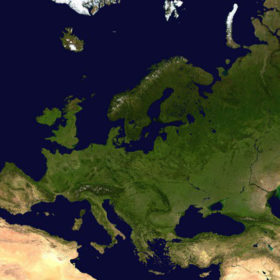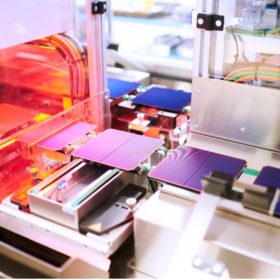Equinor acquires Danish solar developer
Equinor is set to fully acquire developer BeGreen, which has a project pipeline of more than 6 GW in Denmark, Sweden and Poland.
SPIC, Ocean Sun switch on offshore floating solar-wind pilot
State Power Investment Corp. (SPIC) has started operating the world’s first offshore floating solar plant integrated with an offshore wind turbine, at a pilot site off the coast of China’s Shandong province. It features floating PV tech from Norway’s Ocean Sun.
PCM-based thermal battery to store solar power via heat pump
Norway’s SINTEF has designed a heat storage system based on phase change materials (PCM) that can support PV generation and peak shaving. The battery’s container hosts 3 tons of liquid biowax based on vegetable oil and is now beating performance expectations at a pilot facility.
The Hydrogen Stream: GHD Group, Fraunhofer-Gesellschaft win contract for UAE national hydrogen strategy
Germany made efforts this week to expand hydrogen ties with the Gulf states, and Japan announced plans to team up with several nations to ramp up hydrogen production. ICIS, meanwhile, has started offering Europe’s first market-linked renewable hydrogen assessments.
Euro solar industry on course to support more than 500,000 jobs this year
Poland was the EU’s biggest solar jobs market last year, thanks to a national rooftop incentive program, but Germany’s push to repatriate solar manufacturing will help the bloc’s PV powerhouse back to the number one slot in three years’ time, according to SolarPower Europe.
Norwegian Crystals proceeds with 6 GW PV ingot plans
Norwegian Crystals said it has secured all relevant permits for a new manufacturing facility in Norway. Construction is expected to start by the end of this year. The factory will have an initial capacity of 3.6 GW by 2026 but will eventually reach 6 GW at a later stage, according to the company.
Meyer Burger secures silicon wafer supplies from Norway
Meyer Burger has announced that it has concluded a binding supply agreement with Norwegian Crystals for silicon wafers to use in heterojunction cell manufacturing. Hydro facilities primarily power the production of the wafers and their precursor materials in Norway. Combined with the shorter distance they’ll have to travel, this adds up to a low carbon footprint.
The Hydrogen Stream: Traditional hydrogen blending could damage gas pipelines, say researchers
UK researchers have revealed that gaseous hydrogen could cause problems in natural gas pipelines, while electrolyzer manufacturer Nel has announced plans to build a second production line in Norway.
New floating PV system for near-shore applications
Norwegian startup Sunlit Sea has designed a floating array consisting of a single unit float built-in cold-pressed aluminum with a close-to-standard solar panel bonded on the top surface. A 22.7%-efficienct mono PERC photovoltaic panel is bonded to the top of the float, giving a total unit thickness of 85 mm.
New software to identify solar-suitable surfaces
Norway’s Glint Solar has developed cloud-based software that finds suitable surfaces for solar parks. It analyzes factors such as the distance to the grid or substations, topography, soil depth, and solar radiation. The tool can also be used for preliminary project sizing.










